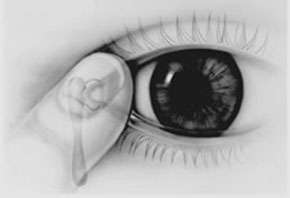Managing Glaucoma with Eye Drops
Chronic medical conditions are often treated with chronic medications. People are often comfortable with the ease of taking a pill as opposed to other more uncomfortable treatments, but what if your chronic medication isn’t a pill, but an eye drop instead?
There is no cure for glaucoma, which is a group of diseases that can lead to vision loss. Glaucoma affects over 400,000 Canadians, and the prevalence is rising. Medications can be used to lower the pressure inside the eye, which have the goal of preventing or slowing visual loss, and improving quality of life.
There are several different families of drugs which are used in eye drops to lower the pressure inside the eye. Each of these different medications have their own set of benefits and side effects. As always, it is important to speak with your pharmacist to know the important cautions and proper way to use each of your drops. The following tips may be helpful for anyone using eye drops for glaucoma.
1 – Effective Insertion
The medication in glaucoma eye drops are often very concentrated in order to penetrate inside the eye where they are needed. However, some side effects can occur if these concentrated medications are absorbed into the body through the nasal mucosa. In order to keep the medication in the eye where it is needed, it is best to use your finger to close the drainage system for several minutes after instilling an eye drop. (see picture). Gently keeping your eyelids closed for 3 minutes after putting in an eye drop will also help keep the medication in your eye where it needs to be, avoiding side effects.

2 – Effective Timing
If you have more than one eye drop to put in, space them out at least 5 minutes apart to avoid washing the first eye drop out with the second one. If you wear contact lenses, only put them back in 15 minutes after instilling eye drops.
3 – Combining Eye Medications
For people who need multiple eye drops to keep the pressure inside the eye low, check with your pharmacist or eye care professional about the possibility of getting a combination eye drop, rather than two separate ones. This method is more convenient and is easy for patients to stick with as opposed to using two separate drops.
4 – Possible Side Effects & Interactions
Benzalkonium chloride is a preservative agent commonly used in eyedrops. Some patients may have an allergy to this preservative, and will experience irritation, itchiness, dryness and stinging eyes. If these symptoms are occurring, you may want to ask the pharmacist about eye drops with a different preservative, or preservative-free options.
Some medications can cause or worsen glaucoma, such as corticosteroids, some antihistamines, long-term use of contraceptives, and some anticonvulsants. If you have glaucoma, speak with your pharmacist about medications that may be a concern.
Although you may have heard otherwise, the use of cannabis is not recommended for the treatment of glaucoma, because more effective and less harmful treatments exist.
5 – A Little Help
For older adults who struggle with keeping the eye dropper bottle steady, an eye drop guide may be helpful. This is a simple device that fits onto an eye dropper bottle, and allows the bottle to be positioned and steadied over the eye for drop administration. These devices can be obtained from your Home Health Care Pharmacist, free of charge.
With these tips and good advice from your pharmacist, the chronic management of glaucoma with eye drops can successfully preserve your vision for many years to come.

Mark Mercure is certified by the Board of Pharmacy Specialties in Geriatric Pharmacy and is the owner/manager of Home Health Care Pharmacy. He specializes in providing comprehensive medication reviews which help patients optimize medication use and avoid drug-related issues.

